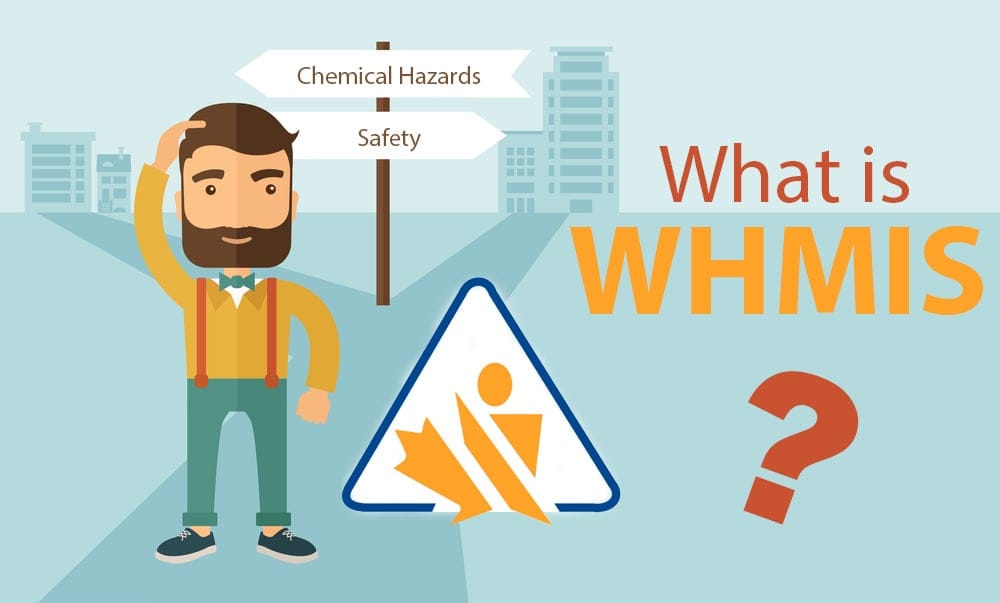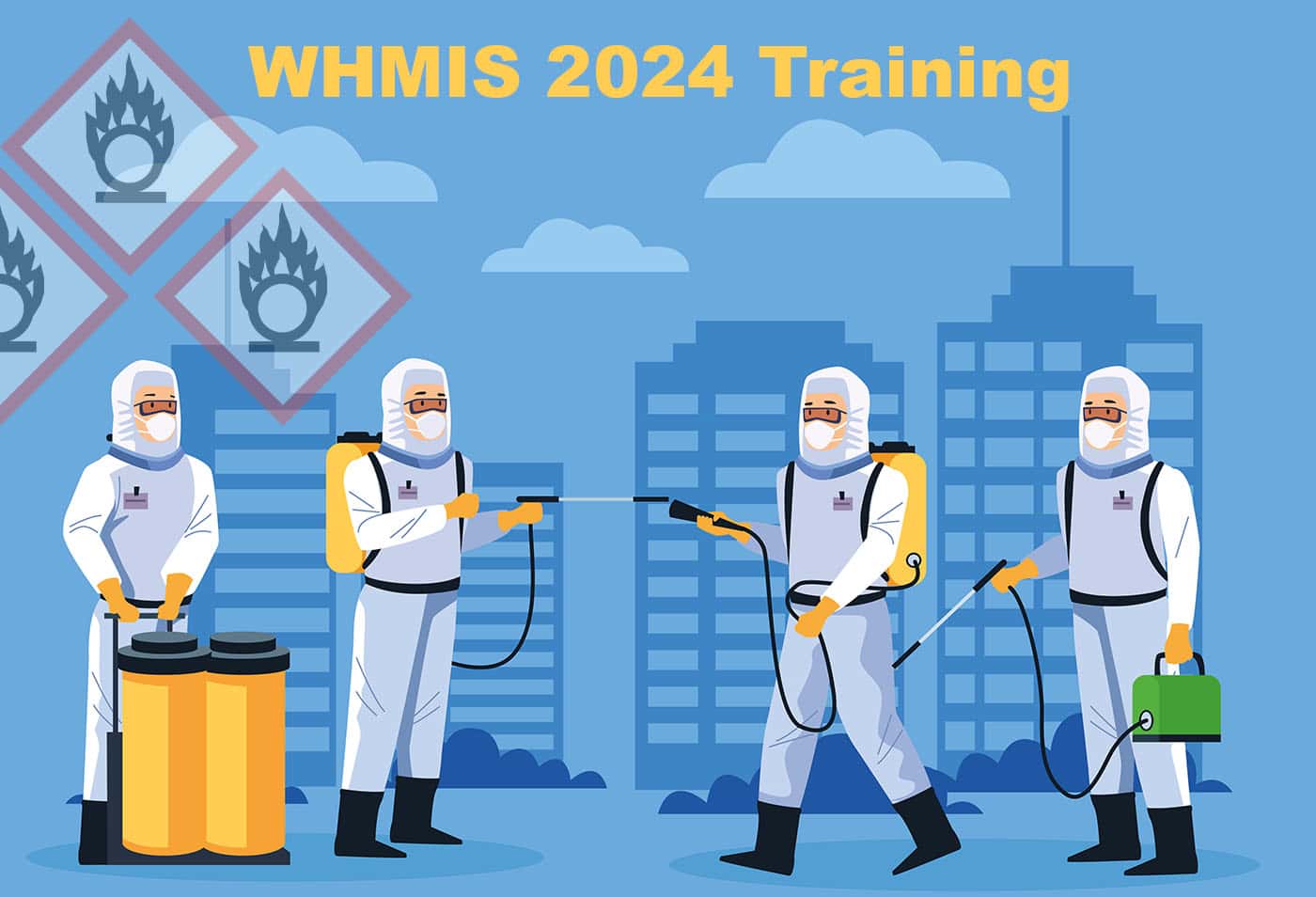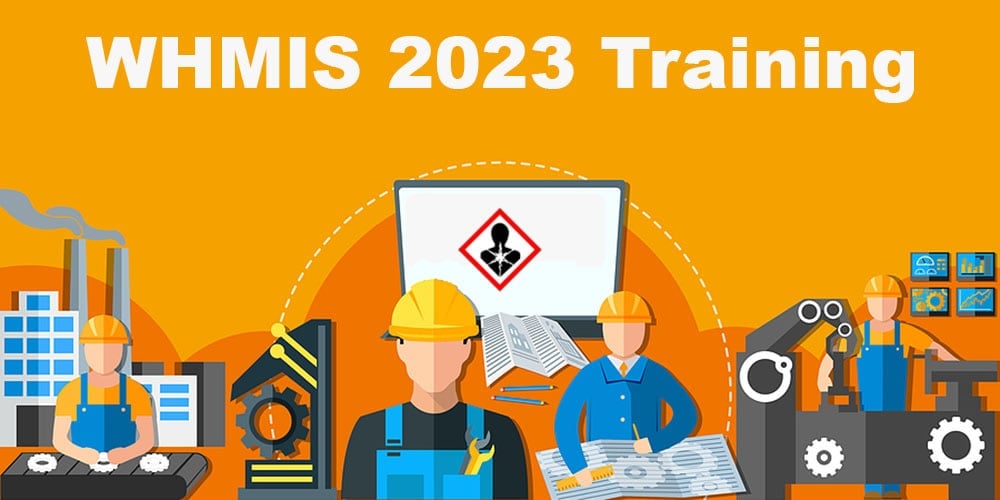What is WHMIS? The Workplace Hazardous Materials Information System
Both employers and employees in Canada often ask, “What is WHMIS?”
According to recent statistics, there are about 1,000 job-related fatalities in Canada every year. Most of them are due to long-term illnesses caused by exposure to hazardous products.
All across Canada, people have been working to make workplaces safer. That’s the purpose of the Workplace Hazardous Material Information System. You probably know it as WHMIS.
This article will help you understand what WHMIS IS and how you can get the training you need.
What is WHMIS?
As we said, WHMIS stands for Workplace Hazardous Material Information System. This Canadian standard was first introduced in 1988. It’s designed primarily to inform Canadian workers about hazardous products that they may use or work around on the job.
The program requires employers and workers alike to follow standards relating to hazardous products – previously referred to as hazardous materials. This includes providing standardized information sheets. It provides a standard of communication about materials used or stored on the job site.
The idea is to help Canadian workers stay safe on the job. With the right information, they can handle hazardous products safely. This reduces the risk of injury or illness.
Worker education and training are a central element to WHMIS.
The Employer’s Responsibilities
Under the Workplace Hazardous Material Information System, employers have several responsibilities. The main responsibilities are:
- Identifying hazardous products that they use in the workplace
- Ensuring that hazardous products are clearly labeled
- Making safety data sheets available to all workers
- Providing education and training to their workforce
Not all employers provide WHMIS training to their employees on site. Some may ask an employee to have WHMIS certification before they start their new job.
What Happens if You Don’t Comply?
Human Resources Development Canada tracks the program for federal workplaces. Provinces and territories have designated occupational health and safety agency. In Ontario, there are several associations that partner with the Ministry of Labour.
Penalties for non-compliance are quite steep. Federal workplaces can face fines of up to $1 million. A federal employer can even face two years in prison for violations.
Provincial and territorial authorities can hand down similar fines and prison terms. They can also put a halt on work orders and seize products.
The Types of Products Considered Hazardous
There are several different classifications for hazardous products. A product can fall into more than one category.
A good example is cleaning products. Many industrial cleaners are corrosive. These cleaners also have immediate toxic effects if they come into contact with skin or enter the body through another route of entry.
Other products may not produce immediate effects. Instead, they have toxic effects over long periods of time. An example is silica dust, which workers may be exposed to every day in some industries.
Some common products in the workplace that need labels include:
- Chlorine, bleach, and chemical cleaners
- Paint
- Disinfectants
- Pesticides
- Gasoline and petroleum products
- Solvents like ethanol and acetone
Hazardous products exist in almost every workplace. For example, a retail store may use cleaning products. Even these products can be hazardous and need the right labels.
The Worker’s Responsibilities
Canadian workers have the right to know about hazardous products in the workplace. They also have the right to receive education and training to keep them safe when they need to handle or use these materials.
The federal government developed WHMIS to support these rights. Workers also have responsibilities in this system. A worker’s responsibilities include:
- Following instructions and safe work procedures
- Being familiar with the hazardous products they might find on the job
- Checking for labels and not using unlabeled products
- Asking for help when they need it
- Reporting concerns
It’s also the worker’s responsibility to take part in education and training. Your employer may provide training for you. A potential employer might also ask you to complete training and education on your own.
Why is it so important to complete this training? It provides you with the tools you need to stay safe on the job. Your employer must ensure that you have access to SDSs and labels, but they won’t help you much if you don’t know how to read them.
The Updated 2015 Program
In 2015, Canada updated the Workplace Hazardous Materials Information System and integrated components from the GHS (Globally Harmonized System of Classification and Labeling of Chemical Products). This marked the first significant changes since WHMIS came into effect in 1988.
The provinces and territories phased in the new standards over three years. Most workplaces in Canada were required to be WHMIS 2015 compliant by December 1, 2018. New labels and updated SDSs should be in place now.
This has required many employers to update their standards and processes. It also means that all workers need to update their WHMIS training.
How to Complete Your Training
Employers and workers alike can take advantage of training online for certification.
Employers might want to register for WHMIS online training courses. This allows them to provide the same quality education and training to all new hires.
Workers also need to have WHMIS training on a regular basis to keep up to date. The retraining frequency will depend on several factors and should be determined by the employer. With the new 2015 standards now in place, it’s a good time to retrain.
Individual workers may also seek out WHMIS online certification. Some employers won’t hire workers who haven’t already completed their training. With an online course, you can get certified in about an hour.
Online training courses have advantages for both employers and employees. Employees can complete quizzes and lessons at their convenience. The employee can also revisit material and quizzes to make sure they’ve mastered them.
These courses are often more cost-effective as well. Individuals seeking training may find them a better choice than training delivered in a classroom. Employers may also see reduced costs.
Complete Your WHMIS Training Today
Now you’ve answered the question, “What is WHMIS?” You understand how important it is, and you also know your responsibilities.
Whether you’re an employer or a worker, great training is important for you. Don’t delay getting certification for you or your employees any longer. If you need WHMIS training, check out our online course offerings and get certified today.







